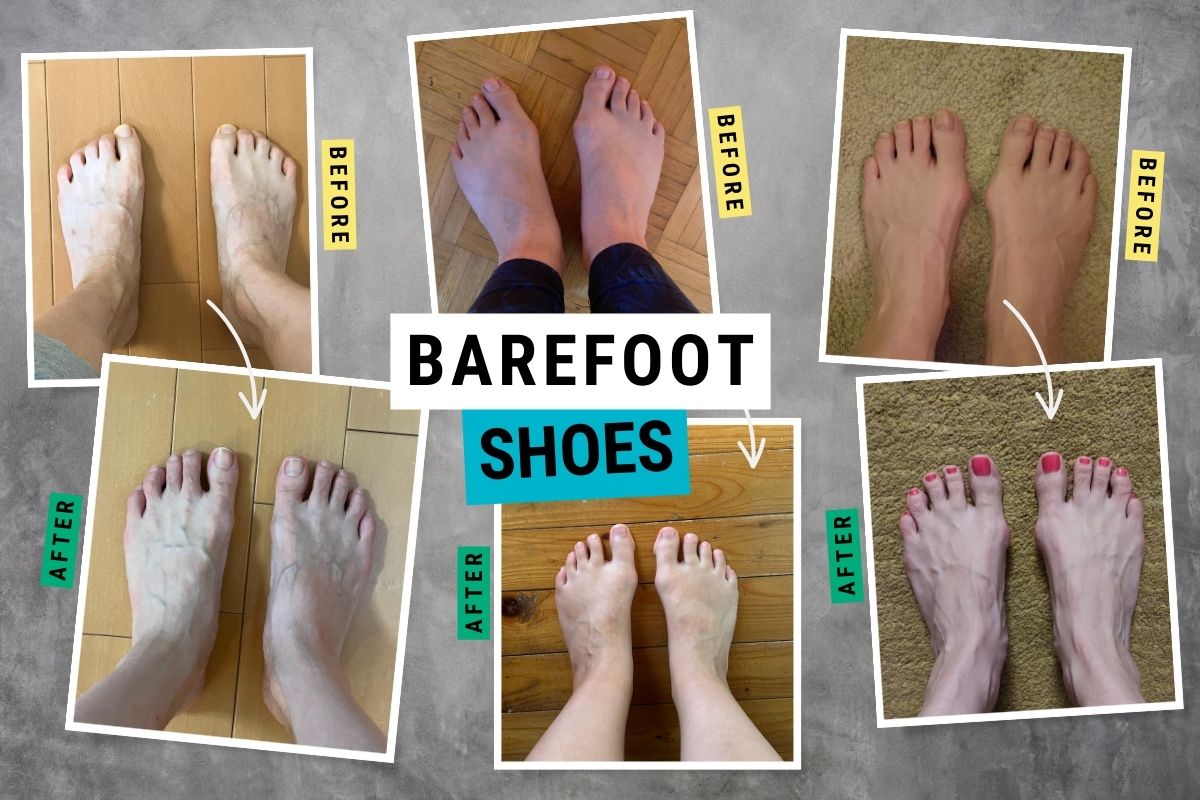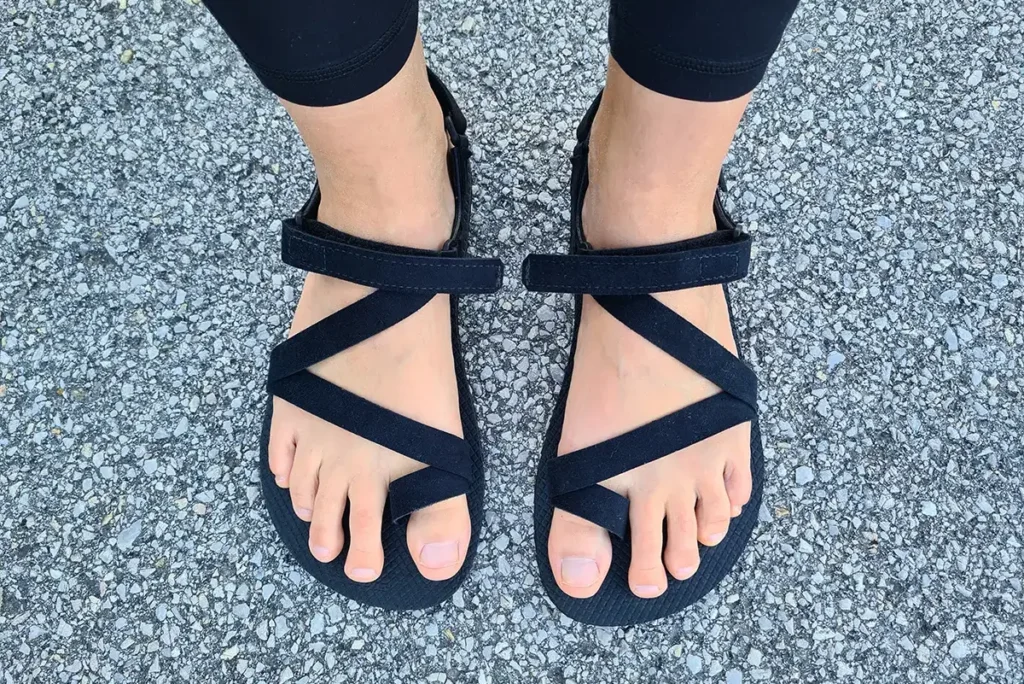
Barefoot shoes are gaining attention for their unique ability to support your feet in the most natural way possible. From strengthening foot muscles to improving balance and reducing the risk of injuries, the benefits of barefoot shoes go beyond just comfort—they align with how your body was designed to move. Whether you’re looking to improve posture, enhance stability, or simply experience greater freedom in your steps, barefoot shoes can be a game-changer for your overall foot health.
When it comes to shoes, most of us are used to the structured, padded, and sometimes restrictive feel of traditional footwear. But barefoot shoes are transforming how we think about footwear, flipping the script to offer a completely different experience that brings your feet back to their natural state. With claims of improved foot strength, better balance, and even reduced injury risk, barefoot shoes have captured the attention of many. But what are the benefits of barefoot shoes? Let’s dive into the benefits of barefoot shoes and explore if they might be the right fit for you.
Barefoot vs. Traditional Shoes: What’s the Difference?
For those unfamiliar with barefoot shoes, the difference from traditional shoes is instantly noticeable. Traditional shoes often have narrow toe boxes, thick, rigid soles, and structured support that can restrict natural foot movement and alter posture. Over time, restricted toe spread and elevated heels can lead to a variety of foot problems, as cramped spaces and stiff soles interfere with natural alignment.
In fact, research shows that poorly fitting footwear is common among older adults and is strongly associated with forefoot problems and foot pain. Historical trends also reflect this, with the rise of bunions in medieval times thought to be linked to the fashion for pointy shoes.

Wearing shoes that limit foot mobility can also act like a “plaster,” reducing the range of motion and potentially weakening foot muscles over time. Studies on immobilization show that up to 40% of muscle strength can be lost in just one week, highlighting the importance of free movement to maintain foot strength.
In contrast, barefoot shoes take a minimalist approach, with thin, flexible soles and a foot-shaped design that mimics the natural contours of functional feet. With a wide toe box, they allow your toes to spread and move naturally, promoting both comfort and healthy foot alignment-the foundation for the many benefits we’ll explore below.
1. Building Strength Naturally
One of the standout benefits of barefoot shoes is the way they can improve foot strength. When you walk in barefoot shoes, your feet have to work a little harder. Without the artificial support of thick soles or arch structures, your muscles, ligaments, and tendons become more engaged. Research suggests that wearing minimalist shoes actively engages your foot muscles, leading to increased muscle strength over time. In fact, daily activity in minimalist shoes can increase foot strength by nearly 60% in just six months.

Growing up barefoot also supports healthy foot development, as shown in studies of habitually barefoot children, who display higher and stiffer longitudinal arches, wider feet, and fewer foot deformities compared to children who regularly wear shoes. By requiring your feet to stabilize each step naturally, barefoot shoes help build strength and resilience, making your feet stronger and more capable in everyday movements. This highlights an often-overlooked benefit of barefoot shoes: their ability to naturally strengthen and support your feet.
2. Foot-Shaped Design for Better Balance and Movement
Ever feel that instant relief when you kick off tight shoes and stretch your toes? That’s the feeling barefoot shoes aim to recreate every day. With a wide toe box, these shoes allow your toes and forefoot to spread naturally, creating stability and longitudinal stiffness that lets you push forward effectively as you walk or run. Healthy toes should move like fingers, but most traditional shoes squeeze them together, affecting your ability to balance and distribute weight evenly.
By allowing toes to splay freely, barefoot shoes support the big toe’s crucial role in balance, enhancing control and stability for both static and dynamic movements. This freedom also promotes circulation and enables foot muscles to work without restriction.
Research has shown that strong toe flexors reduce the risk of falls and improve postural balance in people over the age of 60. In fact, maintaining balance through good toe splay and stability has been linked to increased survival rates in middle-aged and older individuals who can perform a successful 10-second one-legged stance. Studies also indicate that children who grow up barefoot demonstrate superior balance and jumping abilities compared to those who wear shoes, suggesting that barefoot activity may support motor skill development in early years.

Additionally, studies of habitually barefoot populations reveal that their feet tend to be wider, with toes naturally splayed and aligned straight forward, while shoe-wearing individuals often exhibit narrower feet with toes compressed or misaligned.
Over time, this natural alignment can even help reduce the risk of issues like bunions by giving toes space to function freely and comfortably. Altogether, this foot-shaped design supports stability and provides a grounded, strong foundation with every step.
3. Natural Alignment and Posture with Zero-Drop Soles
One of the defining features of barefoot shoes is the zero-drop sole, which means the heel and toes are at the same level. This flat design encourages a more natural posture, helping to align the spine and improve overall body alignment. Unlike traditional shoes with raised heels, barefoot shoes keep the foot flat, which helps relieve pressure on the lower back and hips and promotes a balanced, aligned feeling with each step.

In contrast, wearing shoes with an elevated heel can cause calf muscles and the Achilles tendon to shorten over time, contributing to stiffness and a limited range of motion in the back of the leg. Research also suggests a connection between tight calf muscles and flat feet, highlighting the importance of calf flexibility for maintaining healthy foot alignment and posture.
Studies further show that high-heeled shoes are associated with postural issues like forward head posture, lumbar hyperlordosis, pelvic tilt, and knee valgus. They can also lead to poorer static and dynamic balance, which increases the risk of falls and related injuries. With zero-drop shoes, your body maintains a natural alignment, reducing these risks and supporting a more stable, comfortable gait.
4. Improved Sensory Feedback and Proprioception for Stability
Barefoot shoes are designed with flexible, thin soles that allow your feet to move freely and feel the ground with each step. Unlike traditional thick-soled shoes, which can diminish sensory feedback from the feet, leading to alterations in gait, flexibility in barefoot shoes provides sensory feedback that helps your body understand and respond to changes in the surface beneath you. When your feet can feel the ground more closely, they send essential signals to your brain, boosting proprioception—your body’s awareness of position and movement.

This close connection between feet and brain enhances your balance and coordination as your body naturally adjusts to keep you stable. In fact, research shows that minimalist shoes can improve both stability and mobility in individuals with a history of falls, underscoring how effective sensory feedback and wide toe box can be in maintaining balance and reducing the risk of stumbles. Over time, this feedback loop not only strengthens the muscles in your feet but also helps you move with more confidence on any terrain. This highlights the benefits of barefoot style shoes for enhancing stability and natural movement.
5. Healthier Gait and Reduced Risk of Injury
Barefoot shoes support a more natural walking and running gait by bringing your feet closer to the ground, which enhances your body’s natural movement patterns. Unlike traditional footwear that often encourages a heavy heel strike, barefoot shoes promote a softer, more controlled heel landing, followed by a smooth transition through the foot. This gentle shift reduces impact forces on your joints and can lead to a more balanced and controlled gait—especially beneficial for anyone managing knee or hip discomfort.
The benefits of this gentler start early, too. Studies have shown that children who grow up barefoot tend to adopt non-rearfoot strike patterns when running, which is associated with lower impact forces and a potentially lower risk of injury. Additionally, barefoot walking has been linked to reduced stress on the lower extremity joints, which can be particularly helpful in managing symptoms of knee osteoarthritis and slowing its progression.

Proper footwear also plays a crucial role in maintaining joint health. Shoes that are too tight, too rigid, or incorrectly fitted can lead to foot pain and disorders that may alter gait mechanics and increase the risk of lower extremity injuries, affecting areas like the ankles and knees. By offering a flexible, foot-shaped design, barefoot shoes encourage a more natural gait, providing your feet with the freedom to move as intended and helping to support optimal joint function with every step.
Ready to Transition to Barefoot Shoes Safely?

If you’re considering barefoot shoes, take it slow to give your feet time to adapt safely. Gradually strengthening and increasing flexibility in your feet will help prevent muscle and joint strain, as a rapid transition—especially in running—can lead to stress-related injuries. For those who need a little extra cushioning to start, there are barefoot-friendly styles with wide toe boxes and some padding to support your transition. Check out these inspiring before-and-after transformations for a glimpse of what’s possible!
Conclusion: Barefoot Shoes Are More Than Just Footwear
With benefits that align with your body’s natural movement and promote a healthy, active lifestyle, barefoot shoes offer a refreshing, back-to-basics approach to footwear. From stronger feet and better balance to a reduced risk of injuries, these shoes work with your body’s design rather than against it. Making the switch to barefoot shoes is like giving your feet a chance to experience freedom while still being protected—a natural way to enhance comfort and function in every step. If you’re ready to explore the benefits of using barefoot shoes, check out our detailed reviews, buying tips, and top barefoot shoe brands at barefootuniverse.com.
Whether you’re looking to improve your posture, boost foot health, or simply enjoy a more natural walking experience, barefoot shoes bring your feet—and your body—closer to their instinctive design.
Have you experienced any surprising benefits from barefoot shoes? Let us know in the comments below!












